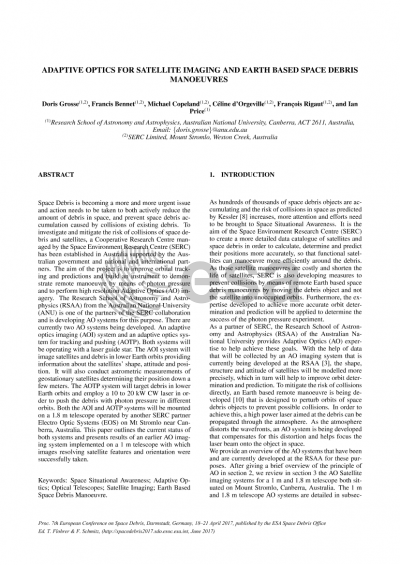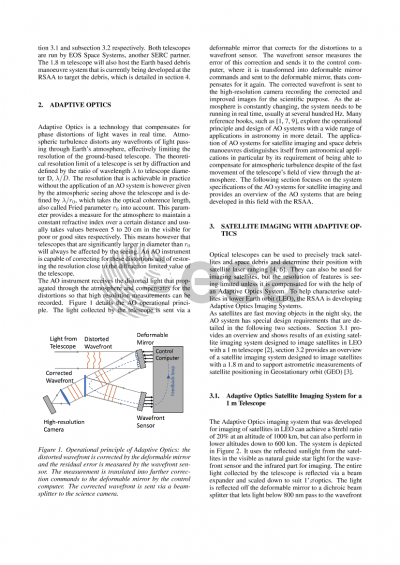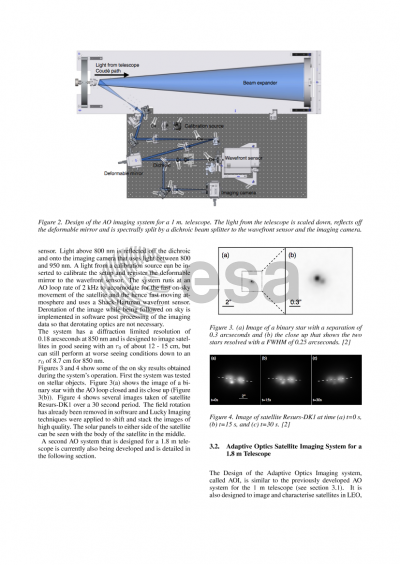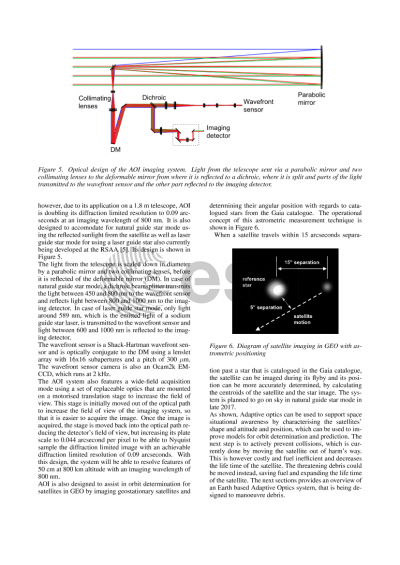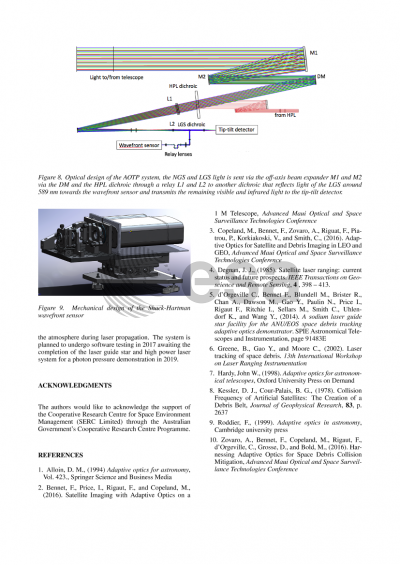Document details

Abstract
Space Debris is becoming a more and more urgent issue and action needs to be taken to both actively reduce the amount of debris in space, but also prevent space debris accumulation caused by collisions of existing debris.
To mitigate the risk of collisions of space debris and satellites, a Cooperative Research Centre managed by the Space Environment Research Centre (SERC) has been established in Australia supported by the Australian government and national and international partners. The aim of the project is to push debris that is occupying useful orbits with a ground based laser by means of photon pressure into different unused orbits avoiding potential collisions. To effectively launch the laser beam through a telescope and achieve a high photon density at the object in orbit, the beam needs to be shaped in order to compensate for dispersion caused by atmospheric turbulence. Adaptive optics (AO) is employed to achieve this task.
The Research School of Astronomy and Astrophysics (RSAA) from the Australian National University (ANU) is one of the partners of the SERC collaboration and is developing adaptive optics systems for this purpose. There are currently two AO systems being developed. An adaptive optics imaging (AOI) system and an adaptive optics system for tracking and pushing (AOTP). Both systems will be operating with a laser guide star to improve sky coverage. The AOI system will image satellites and debris in lower Earth orbits providing information about the satellites' shape, attitude and position. It will also conduct astrometric measurements of geostationary satellites determining their position up to several metres. The AOTP system will target debris in lower Earth orbits and by employing a 10 kW laser which is designed to push the debris with photon pressure in different orbits. Both systems will be mounted on a 1.8 m telescope operated by another SERC partner Electro Optic Systems (EOS) on Mt Stromlo near Canberra, Australia.
This paper outlines the current status of both systems and presents results of a preceding AO imaging system implemented on a 1m telescope with which images resolving satellite features and orientation were successfully taken.
Preview
